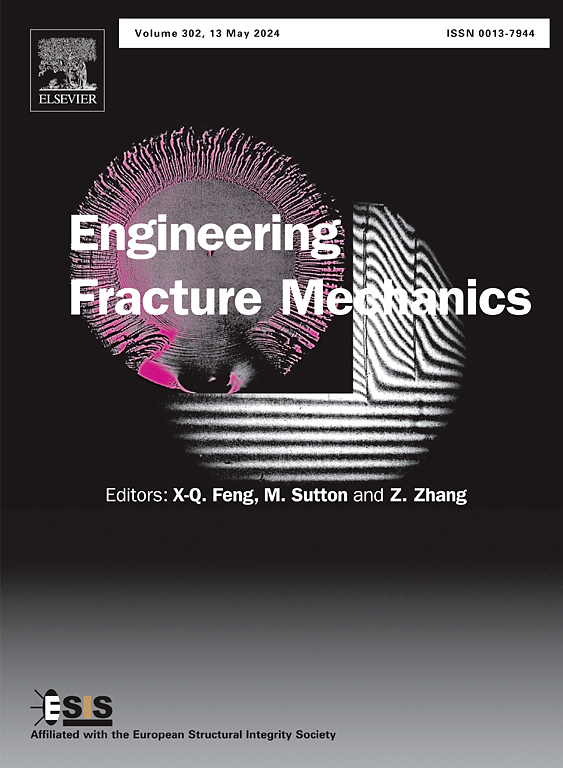基于流固耦合分析的环向裂纹止裂器对CO2管道运行韧性断裂控制的有效性研究
IF 5.3
2区 工程技术
Q1 MECHANICS
引用次数: 0
摘要
为了减少温室气体排放,对碳捕获、利用和储存的需求不断增加,这使得人们对通过管道安全运输二氧化碳(CO2)产生了更大的兴趣。CO2最好以其致密相或超临界相输送;然而,在这些条件下运行的管道特别容易发生延性断裂(RDF)。本研究旨在通过三维流固耦合分析来模拟致密相和超临界CO2管道中的RDF过程,评估环形裂纹止裂器防止RDF的有效性。采用欧拉-拉格朗日耦合方法捕捉裂纹扩展与CO2减压之间的相互作用,假设其为等熵的均匀平衡条件。忽略了减压产生的温度下降对管材断裂韧性的影响。对具有代表性管道属性和工况的CO2管道进行了参数化分析。为了研究环形环几何参数对裂纹止裂效果的影响,将环形环建模为刚体作为合理的第一近似。分析结果揭示了环间距和径向间隙等关键设计参数对环形避雷器效能的影响,为环形避雷器的优化设计提供了指导。本研究论证了采用先进的流固耦合模型评价和提高CO2管道结构完整性的可行性和优越性。本文章由计算机程序翻译,如有差异,请以英文原文为准。
Investigation of effectiveness of toroidal ring crack arrestors for running ductile fracture control in CO2 pipelines using fluid-structure interaction analyses
The increasing demand for carbon capture, utilization, and storage to mitigate greenhouse gas emissions has led to greater interest in the safe transportation of carbon dioxide (CO2) through pipelines. CO2 is preferably transported in its dense or supercritical phase; however, pipelines operating in these conditions are particularly susceptible to running ductile fracture (RDF). This study aims to assess the effectiveness of toroidal ring crack arrestors for preventing RDF in dense-phase and supercritical CO2 pipelines by carrying out three-dimensional the fluid–structure interaction analyses to simulate the RDF process. The coupled Eulerian-Lagrangian approach is employed to capture the interaction between crack propagation and CO2 decompression that is assumed to be isentropic and in homogenous equilibrium conditions. The effects of the temperature drop resulting from the decompression on the fracture toughness of the pipe steel are ignored. Parametric analyses are performed on a hypothetical CO2 pipeline with representative pipe attributes and operating conditions. To focus on the effects of geometric parameters for the toroidal ring on the crack arrest effectiveness, the rings are modelled as rigid bodies as a reasonable first approximation. The analysis results provide insights into how key design parameters such as the ring spacing and radial clearance influence the effectiveness of toroidal ring arrestors and guidance on optimizing the design of toroidal ring arrestors. This study demonstrates the feasibility and advantages of using advanced fluid–structure interaction model to evaluate and enhance the structural integrity of CO2 pipelines.
求助全文
通过发布文献求助,成功后即可免费获取论文全文。
去求助
来源期刊
CiteScore
8.70
自引率
13.00%
发文量
606
审稿时长
74 days
期刊介绍:
EFM covers a broad range of topics in fracture mechanics to be of interest and use to both researchers and practitioners. Contributions are welcome which address the fracture behavior of conventional engineering material systems as well as newly emerging material systems. Contributions on developments in the areas of mechanics and materials science strongly related to fracture mechanics are also welcome. Papers on fatigue are welcome if they treat the fatigue process using the methods of fracture mechanics.

 求助内容:
求助内容: 应助结果提醒方式:
应助结果提醒方式:


